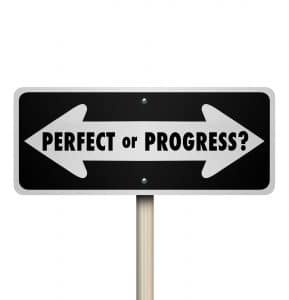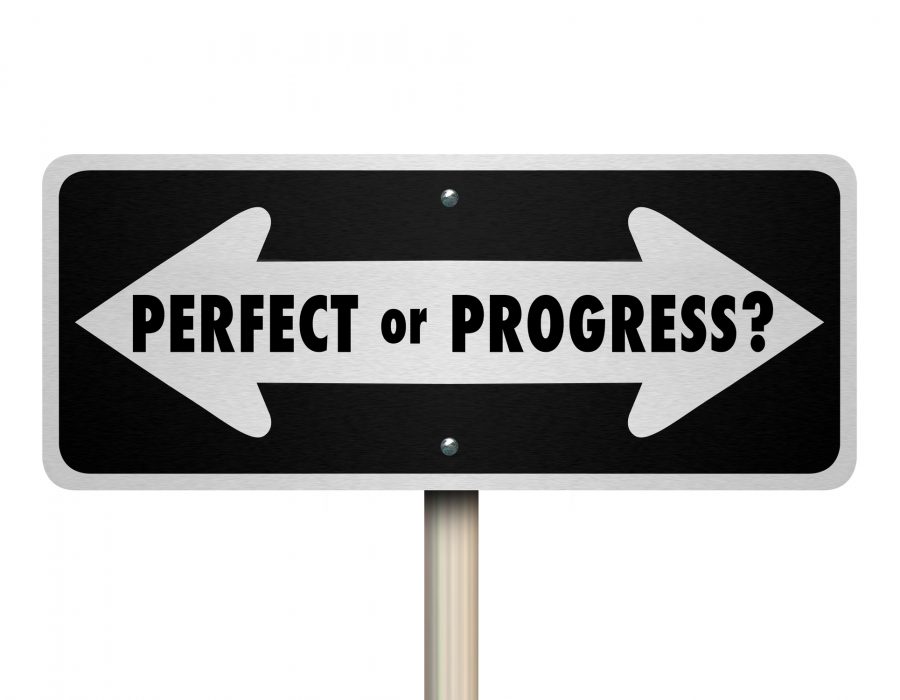 If you push through that feeling of being scared, that feeling of taking risk, really amazing things can happen – Marissa Mayer
If you push through that feeling of being scared, that feeling of taking risk, really amazing things can happen – Marissa Mayer
We can be our own worst enemy, and when building a business many of us can fall victim to perfection paralysis. The Urban Dictionary defines perfection paralysis as, “The inability to start on a project, assignment, essay or any creative task due to the fear of not getting it perfectly right.” Sure, we want to wait until our idea is “perfect” to share it with the world, but that is not sustainable, especially if you intend to make a living. Nothing in life, and definitely nothing in business, is ever perfect. In fact, when you continue to rework and re-do, you often move right past the perfect spot and miss the magic.
You have to move forward with your ideas. As Amy Nelson, CEO & Founder of The Riveter, says, “Entrepreneurship requires you to jump in when something is 70 percent perfect and be willing to figure out the rest as you go. The difference between “good enough” and perfect could be the difference between success and missing the boat (or making money).”
Perfection paralysis is a widespread problem, and not limited to me, you, and three other random creatives. In fact, even Mel Robbins has written that she fell into perfection paralysis when writing The 5 Second Rule. While the process was perfect in her mind, there were days that the words wouldn’t come, and it wasn’t all rainbows and sunshine.
“When you strive for perfection, you are bound to fail,” she wrote. “By calling on the good-enough principle, you are giving yourself permission to fail. It is only when the pressure of perfection has been removed that you can tap into your inner genius and do your best work.”
“Good enough” has been an important lesson in my 20+ years as a freelancer, and by embracing it, I was able to beyond hobbyist status, and actually make a living. And moving beyond perfectionism isn’t just good for your productivity, it’s also good for your health. As Health.com reports, people who have perfectionist tendencies are sometimes more than just detail-oriented high achievers. They are often racked with anxiety, depression and fear.
So, the question is, how do you move from perfection paralysis to good enough? Perfectionism paralysis is defined by the inability to start, or sometimes to keep going. To combat that, you need to make a list, set goals, and get busy. If you have to have XYZ done by next Tuesday, you have your marching orders. If XYZ doesn’t have a deadline, make one and stick to it. Make sure your goals are realistic, while at the same time, moving you forward.
Lisa Guice writes in Forbes that she approaches her work with a recover and release mindset, meaning that once she completes her work and reviews for errors and realistic value, she releases it. “Once corrections are made, move into the release stage, where you let it go and are OK with what results from it. Your realistic view of its value will be the reminder you need to draw from to free yourself from continuing to overanalyze.”
It’s also okay to make mistakes. I know I do. I recently shared a workshop script with a client that I hadn’t done a final edit on, and told her there was a prize for the first typo she found. Remember, nothing is perfect, it’s just important that it be good enough.


